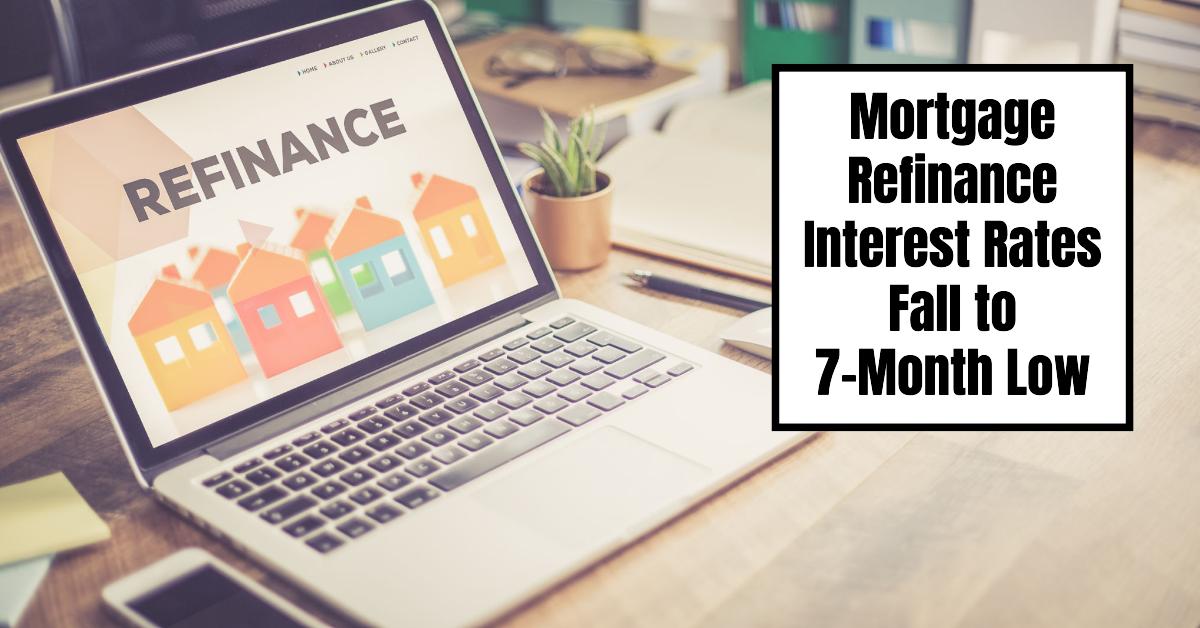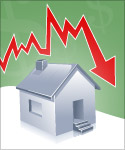Mortgage refinance rates dip again, nearing a seven-month low, becoming a beacon of hope for millions of homeowners aiming to lower their monthly payments. The average rate for a 30-year mortgage refinance plummeted to 6.58% on Friday, just slightly above the 6.55% recorded earlier in the week—the most favorable rate since late December 2023.
This decline in rates could significantly impact the refinancing landscape, enabling borrowers to rethink their mortgage strategies and explore more beneficial options in a relatively unstable economic environment.
Mortgage Refinance Rates Dip Again, Nearing 7-Month Low
Key Takeaways
- Current Rate: The refinance rate for a 30-year mortgage averages at 6.58%.
- Lowest Since: This figure marks the lowest average since December 2023.
- Rate Variations: A variety of refinancing options, including 15-year, 20-year, and FHA loans, have seen minor fluctuations, with many rates decreasing between 3 to 6 basis points.
- Economic Influences: The current dip is primarily influenced by macroeconomic factors such as bond market performance and Federal Reserve policies related to interest rates.
- Potential for Lower Rates: Analysts are cautiously optimistic regarding future declines in mortgage rates as economic conditions develop.
The dynamics that influence mortgage rates are multifaceted, interwoven with broader economic indicators. Recent trends show that homeowners who were previously hesitant may feel emboldened to seize the moment and refinance their loans, potentially saving thousands over the life of their mortgages.
Current Mortgage Refinance Rates Overview
A look at the latest national averages for various refinancing options reveals the following:
| Loan Type | Refinance Rate | Daily Change |
|---|---|---|
| 30-Year Fixed | 6.58% | -0.02 |
| FHA 30-Year Fixed | 6.20% | No Change |
| VA 30-Year Fixed | 5.65% | -0.26 |
| 20-Year Fixed | 6.27% | -0.03 |
| 15-Year Fixed | 5.45% | -0.04 |
| 10-Year Fixed | 5.63% | +0.18 |
| 7/6 ARM | 7.62% | +0.04 |
| 5/6 ARM | 7.67% | +0.04 |
| Jumbo 30-Year Fixed | 6.65% | -0.06 |
| Jumbo 15-Year Fixed | 6.69% | -0.11 |
Data Source: Zillow.
Factors Affecting Mortgage Refinance Rates
Understanding the recent dip in mortgage refinance rates requires delving into several critical factors that shape this financial landscape:
- Bond Market Movements:
- Mortgage rates are intricately tied to government bond yields. A decline in the yields, particularly the 10-year Treasury bond, typically leads to lower mortgage rates, allowing homeowners more opportunities to refinance at favorable terms. The bond market has recently softened, and as a result, the surge of refinancing opportunities is evident.
- Federal Reserve Interest Rate Policy:
- The Federal Reserve's actions concerning interest rates remain pivotal in shaping the mortgage market. Through a series of strategic decisions, the Fed holds a substantial influence over the economic environment that dictates mortgage rates. Recently, the Fed has maintained the federal funds rate at its current level, indicating a cautious stance given ongoing inflation concerns. With the next meeting on September 18 approaching, many anticipate further implications for mortgage rates.
- Inflation Trends:
- Inflation plays a conflicting role in influencing mortgage rates. As inflation levels begin to settle, there could be potential for rates to lower, but persistent inflation above the Fed’s target could prevent significant cuts. The balancing act between controlling inflation and encouraging borrowing through lower rates is a central focus for economists and policymakers alike.
- Market Competition:
- The competitive nature of the mortgage industry means lenders often adjust their rates to attract borrowers, potentially leading to lower rates across the board. Increased marketing efforts by lenders to promote refinancing options may further pressure rates downward, presenting homeowners with viable alternatives for managing their mortgages.
Current Economic Context
To better understand the context in which mortgage refinance rates dip again, it is vital to consider the broader economic landscape. The recovery from the pandemic has influenced interest rates significantly, contributing to fluctuations in mortgage rates over the last few years. The Federal Reserve had engaged in extensive bond-buying during the pandemic to mitigate economic fallout, a move that led to historically low rates. However, following consistent interest rate hikes beginning in 2021, rates began to surge.
Throughout 2023, the Fed has maintained a complex balance in adjusting rates while navigating economic recovery and persistent inflation. The aim of these adjustments has not only been to stabilize the economy but also to foster a favorable borrowing climate. With inflation beginning to ease, signs point to a potentially favorable environment for lower rates in the near future.
The Future of Mortgage Refinance Rates
The upcoming Federal Reserve meeting will be pivotal in directing the future of mortgage refinance rates. Analysts speculate that a steady holding pattern on rates may continue, as concern about inflation persists. However, it is equally important for potential refinancers to remain vigilant as they navigate the mortgage landscape.
Should economic conditions continue on a favorable trajectory, experts predict a gradual decline in mortgage rates. This anticipated decline can create an excellent opportunity for homeowners to capitalize on lower rates, especially as the market adapts to changing economic signals.
Factors such as improved employment statistics and moderate inflation trends are crucial indicators that homeowners should monitor when considering refinancing options.
Making Informed Decisions
As mortgage refinance rates dip again, homeowners are encouraged to evaluate their financial situations critically. Utilizing tools such as mortgage calculators and consulting with financial advisers can help determine whether refinancing is in their best interest. The benefits of refinancing—a lower interest rate or a smaller monthly payment—can have lasting effects on long-term financial health, making it essential to make informed decisions.
By keeping an eye on macroeconomic factors that influence mortgage rates, homeowners can better position themselves for potential refinancing opportunities that align with their financial goals. With rates now hovering at their lowest in months, the window to refinance may not remain open for long, indicating a crucial time for homeowners to act.
ALSO READ:
- Mortgage Interest Rate Predictions After Powell's Jackson Hole Speech
- Will Mortgage Rates Ever Be 3% Again: Future Outlook
- Mortgage Rates Predictions for Next 2 Years
- Mortgage Rate Predictions for Next 5 Years
- Mortgage Rate Predictions for 2025: Expert Forecast
- Prediction: Interest Rates Falling Below 6% Will Explode the Housing Market
- Mortgage Rate Predictions: Why 2% and 3% Rates are Out of Reach
- How Lower Mortgage Rates Can Save You Thousands?
- How to Get a Low Mortgage Interest Rate?
- Will Mortgage Rates Ever Be 4% Again?



